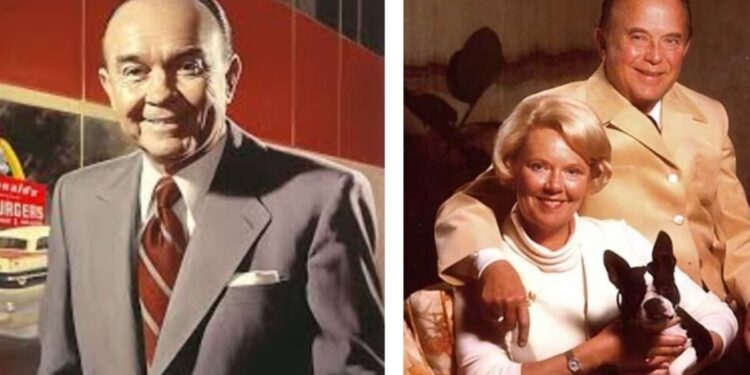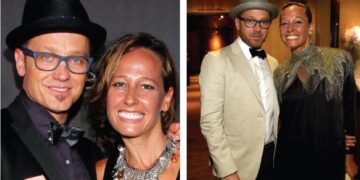When people hear the name “Kroc,” their minds often race to golden arches, fast food, and one of the most iconic American business success stories—McDonald’s. Ray Kroc, the man who transformed a small San Bernardino burger stand into a global empire, is celebrated in books, documentaries, and even a Hollywood film. But lost in the whirlwind of business success and public fascination is the quieter, lesser-known figure of Marilyn Kroc Barg—Ray Kroc’s only child. While her father was commanding boardrooms and headlines, Marilyn chose a path of privacy and subtle influence, largely avoiding public attention. This article uncovers the life of Marilyn Kroc Barg, offering a detailed look at her story, the complexities of her family.
Quick Bio
| Attribute | Details |
| Full Name | Marilyn Janet Lynn Kroc Barg |
| Known as | Marilyn Kroc Barg |
| Famous as | Daughter of Ray Kroc |
| Profession | Businesswoman and Philanthropist |
| Date of Birth | October 15, 1924 |
| Place of Birth | Chicago, Cook County, Illinois, United States |
| Date of Death | September 11, 1973 |
| Place of Death | Arlington Heights, Cook County, Illinois |
| Place of Burial | Skokie’s Memorial Park Cemetery |
| Marital Status | Married |
| Spouses | Walter James Barg (m. 1960), Sylvester Nordly Nelson (m. 1949, div.) |
| Father | Ray Kroc |
| Mother | Ethel Fleming |
| Siblings | None |
| Gender | Female |
| Nationality | American |
| Religion | Christianity |
| Ethnicity | Caucasian |
| Sexuality | Straight |
| Hair Color | Brown |
| Eye Color | Dark Brown |
| Net Worth at Death | $1 million |
Early Life: Growing Up Before the Golden Arches
Marilyn Kroc Barg was born in 1924, at a time when her father, Ray Kroc, was far from the business tycoon he would later become. The Kroc family lived a modest life in Oak Park, Illinois. Her father worked as a traveling salesman, peddling everything from paper cups to milkshake machines. Unlike many children of wealthy founders, Marilyn was not born into wealth. Her formative years were marked by economic instability, a reality that grounded her even as fortune eventually came her way.
She grew up during the Great Depression and World War II, experiences that shaped her views on money, success, and responsibility. These were eras when families stuck together, values were instilled through hardship, and personal modesty was viewed as a virtue. Marilyn’s upbringing differed sharply from the luxury-filled lives of modern-day business heirs, and this background may explain her later desire for a life of discretion and independence.
A Fractured Family: Divorce and Distance
Marilyn’s relationship with her father became complicated as Ray Kroc’s ambition grew. In 1961, Ray finalized his purchase of McDonald’s from the McDonald brothers and entered the fast-food stratosphere. However, his personal life suffered in the process. He divorced Marilyn’s mother, Ethel Fleming, after 39 years of marriage. That separation reportedly created a rift in the family, as Ethel and Marilyn had always been close.
Marilyn didn’t follow her father into the business world, nor did she seek fame through his success. In many ways, she distanced herself from the Kroc empire. Some accounts suggest that father and daughter were not particularly close in Kroc’s later years. He would go on to remarry—most famously to philanthropist Joan Kroc, who inherited a significant portion of the fortune and became the face of the Kroc family’s charitable legacy.
Marilyn’s Personal Life: Privacy Above All
Throughout her life, Marilyn Kroc Barg maintained a fiercely private lifestyle. She married John Barg and had at least one child, a daughter named Linda Smith. While many children of billionaires become socialites, celebrities, or prominent businesspeople, Marilyn largely avoided the limelight. There are no public interviews, no memoirs, and no media tours bearing her name.
What stands out about Marilyn is her seeming refusal to let her father’s empire define her identity. She didn’t appear in advertisements, never took on a role in McDonald’s corporate structure, and left almost no public record of personal opinion or ambition. In today’s hyper-connected, media-obsessed culture, her silence is striking—and perhaps even admirable.
Inheritance and Legacy: A Different Kind of Wealth
When Ray Kroc passed away in 1984, much of his estimated $600 million fortune went to his third wife, Joan Kroc. Marilyn Kroc Barg did receive an inheritance, though it was reportedly not a majority share. Some speculate that the father-daughter relationship had cooled significantly by then, influencing how assets were distributed. Nevertheless, Marilyn lived comfortably but not extravagantly for the rest of her life.
In contrast to Joan Kroc, who became known for massive philanthropic gestures—including a $1.5 billion donation to the Salvation Army and NPR—Marilyn’s giving was quiet and mostly undocumented. However, her family has been linked to charitable contributions over the years, particularly in the areas of education and health. Unlike her stepmother, Marilyn seemed to believe that charity, like life, was best done without fanfare.
Her Tragic Death: A Life Cut Short
Marilyn Kroc Barg died in 1973 at the age of 48, well before her father’s passing. Her death was the result of complications from diabetes, a disease she battled for years. Her untimely death had a profound impact on those who knew her, though it garnered little media attention at the time.
Ray Kroc rarely spoke about Marilyn in public after her death. This silence may have stemmed from grief, estrangement, or a personal philosophy of keeping family matters private. What’s clear, however, is that Marilyn’s passing left a quiet void in the Kroc family story—one that is rarely acknowledged in the broader narrative of McDonald’s rise.
Comparison to Joan Kroc: Two Women, Two Paths
To understand Marilyn Kroc Barg fully, one must also consider the looming shadow of Joan Kroc, her father’s third wife. Joan was the public face of the Kroc legacy after Ray’s death, taking on causes like nuclear disarmament, arts funding, and social justice. She was glamorous, outspoken, and generous to a fault.
Marilyn, in contrast, was reserved, discreet, and seemingly uninterested in media attention or public praise. This dichotomy raises questions about the nature of legacy and what it means to live a “successful” life. While Joan became a celebrated figure in philanthropy, Marilyn’s quieter choices remind us that not all impact has to be loud.
The Forgotten Heiress: Why History Overlooked Marilyn Kroc Barg
One of the more fascinating aspects of Marilyn’s story is how completely she was written out of mainstream history. Biographies of Ray Kroc and documentaries about McDonald’s frequently omit her or mention her only in passing. Even academic studies on corporate dynasties or wealth transfer rarely name her.
Why has history forgotten Marilyn Kroc Barg? The answer may lie in her refusal to capitalize on her family name. In a world where being famous for being famous is a common pursuit, Marilyn’s anonymity was almost radical. She chose substance over spectacle, privacy over power, and personal peace over public scrutiny.
The Legacy Lives On: Her Descendants and Family Impact
Though Marilyn Kroc Barg is no longer alive, her legacy lives on through her descendants. Her daughter, Linda Smith, has been involved in various community and charitable initiatives, though she too maintains a relatively low profile. The Barg family, unlike the Krocs or many business heirs, has not paraded their wealth or status.
While the Kroc fortune eventually influenced everything from public broadcasting to performing arts centers, Marilyn’s familial legacy is one of modesty, values, and independence. Her lineage may not grace red carpets or business magazines, but it continues quietly—perhaps just as Marilyn would have wanted.
A Story Worth Remembering
In many ways, the story of Marilyn Kroc Barg is emblematic of the people history forgets—the quiet souls in loud families, the steady hearts behind powerful figures. She didn’t revolutionize an industry or command the spotlight, but she lived authentically. In doing so, she challenges our assumptions about success, legacy, and what it means to live a meaningful life.
As the daughter of one of America’s most ambitious entrepreneurs, Marilyn could have chosen wealth, fame, or power. Instead, she chose privacy, independence, and, ultimately, a life on her own terms. It is a story that deserves to be told—not for its drama, but for its dignity.
FAQs About Marilyn Kroc Barg
1. Who was Marilyn Kroc Barg?
- Marilyn Kroc Barg was the only daughter of McDonald’s founder Ray Kroc and his first wife, Ethel Fleming. She led a very private life and stayed out of the spotlight despite her connection to a major corporate empire.
2. Did Marilyn Kroc Barg inherit the McDonald’s fortune?
- She received an inheritance from her father, but most of Ray Kroc’s wealth went to his third wife, Joan Kroc. Marilyn passed away before Ray, so she wasn’t part of the final distribution of his estate.
3. How did Marilyn Kroc Barg die?
- Marilyn Kroc Barg died in 1973 at the age of 48 due to complications from diabetes.
4. Was Marilyn Kroc Barg involved in McDonald’s business?
- No, Marilyn was not involved in McDonald’s operations. She chose to live a private life and did not play a role in the company’s leadership.
5. Did Marilyn Kroc Barg have children?
- Yes, she had at least one child, a daughter named Linda Smith, who has also maintained a low public profile.


















